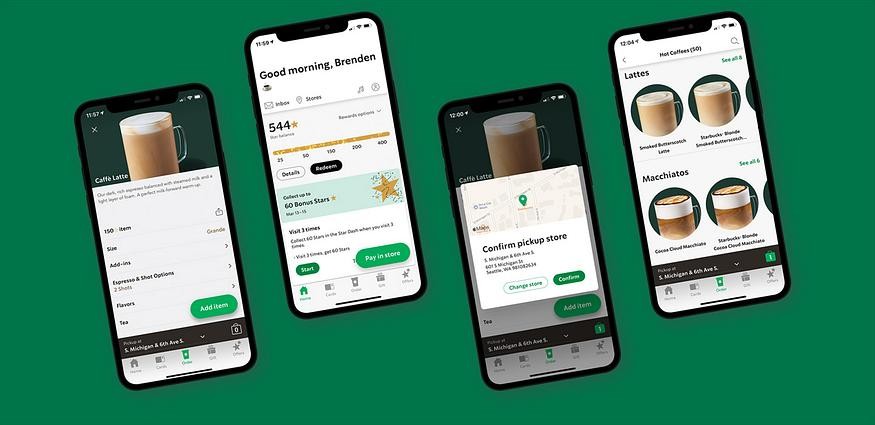
Design can bring immense satisfaction, helping users meet meaningful goals with ease and satisfaction. Conversely, poor designs may cause frustration or even lead to deletion.
One common error when designing for target audiences is creating designs based on personal preferences instead of keeping up with market trends and using user feedback to prioritize features. To combat this mistake, keeping abreast of market trends and using user feedback are two effective methods to ensure you meet those requirements.
1. Using Poor Quality Icons
Mobile app design plays an integral part in users' perceptions of applications - whether for business, personal or entertainment use - users often form initial opinions based on what they see and feel on an app's interface.
An inferior app icon makes it difficult for users to connect its functionality with an application. A strong visual identity should help users quickly recognize an application and its purpose.
Designers must keep in mind that icons should be scaleable in multiple contexts and sizes, particularly when designing for the App Store and Retina devices. Consistency across colors, fonts, templates and layout is another common mistake which may cause confusion for users. A unified app design can enhance brand recall while improving user experience as well as increasing downloads and app engagement.
2. Ignoring Security
Security should always be top of mind for businesses when designing mobile applications, particularly apps that don't use strong encryption or fail to properly protect data. Apps without secure encryption leave themselves open to hacker attacks that compromise user trust resulting in them uninstalling the app from their phones altogether.
One common security mistake involves overcomplicating the design of an application, leading to its excessive consumption of resources or battery drain. Achieve balance between functionality and resource efficiency when designing apps is essential.
Appropriate first impressions for mobile apps are essential. If an application seems confusing or boring, users will quickly lose interest and stop using it. Furthermore, it's essential to establish visual hierarchy within an application and highlight its most essential elements.
3. Ignoring Market Research
Mobile app success relies on numerous variables, including user experience. Therefore, market research is an essential step before releasing a mobile app to market.
An effective mobile app should offer users solutions to specific issues they face. An excellent way of doing this is through conducting customer research surveys; these will enable you to uncover which features your audience wants in an app, as well as which ones they don't require.
Conducting competitor analysis is another essential step towards success in business. Doing this will allow you to identify both their strengths and weaknesses when it comes to app development, such as pricing structures, rankings in app stores, UX advantages/disadvantages, user reviews, reviews of their apps in general as well as industry trends. Don't forget about industry standards as well!
4. Adding Too Many Features
Functionality is key when it comes to mobile apps, as user engagement and satisfaction depend on it. But too many features may hinder an app's performance and bewilder users; so when adding new ones it is essential that new additions respect its original product vision.
Avoid overcrowding the screen with too much content, and use familiar icons. Furthermore, it is wise to limit app permissions so as to allow for smooth functioning.
Before developing an app, it's essential to ask yourself which features will add the most value and benefit your target audience. This will allow you to prioritize which ones should be included; MoSCoW or Kano models can be very helpful here.
5. Ignoring User Interface Standards
When designing mobile applications, it's essential to keep users at the forefront. Doing so will ensure a positive user experience that meets the requirements of its target demographics.
Designing an app without taking user interface (UI) standards into account can result in an overwhelming and disorienting user experience for newcomers. For instance, designing buttons too small to click can make navigating an app harder for new users.
Designing an app with a disorganized and chaotic layout can make it harder for users to locate what they need, leading them down an endless rabbit hole of frustration and indecision. To prevent this misstep, designers should employ clean minimalist designs that adhere to established user interface design guidelines; additionally they should avoid fancy fonts as these can add unnecessary costs when developing apps.
6. Ignoring Usability Tests
When creating a mobile app, it's essential to keep the users' experience top of mind. If the app seems confusing or difficult to use, users are more likely to abandon it in search of one more user-friendly.
Before releasing your app publicly, it is critical to test it first in order to fix any bugs or get user feedback and improve design.
Finalize the design process by keeping up-to-date with mobile UI/UX trends and standards, such as accessibility requirements for people with disabilities. This will ensure your app works seamlessly across platforms while offering users a delightful user experience. Be sure to consider accessibility requirements for larger market reach as well as more user-friendly apps.
7. Ignoring User Feedback
As users quickly delete apps that fail to meet their needs, developers must understand and prioritize user feedback. Regularly reviewing app analytics, conducting tests, and making modifications based on this input can ensure an app remains relevant in its market space.
An overly complex interface can turn off users and cause frustration and abandonment of an app, so developers should avoid overdesigning it and create an intuitive design instead.
Keep in mind that not all mobile users are the same; different demographics require tailored user experiences. Younger users may find some features intuitive while older ones might not; inconsistent UI across platforms may cause further confusion and frustration.

Post a Comment